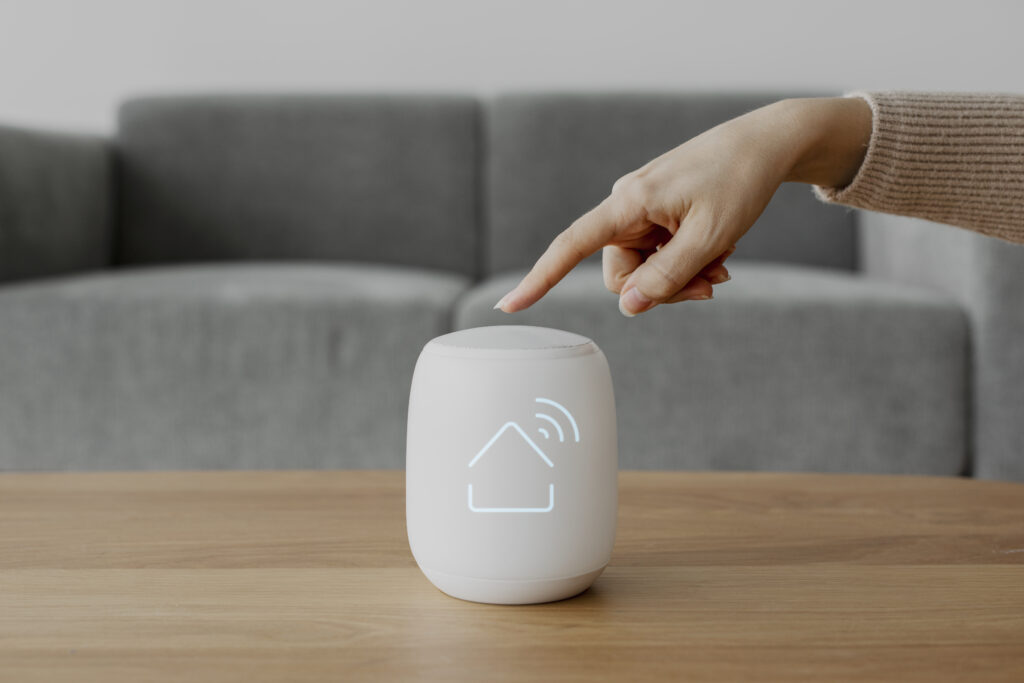In the world of home technology, it can be difficult to keep track of all the different terms and technologies that are available. One common area of confusion is the difference between smart homes and home automation. While these two terms are often used interchangeably, there are actually some key differences between the two.
In this article, we will explore what sets smart homes and home automation apart from one another, and help you understand which option is the best fit for your needs. Whether you’re looking to upgrade your home with the latest technology or simply want to make your life easier, this article will provide you with the information you need to make an informed decision.
What Does Smart Home Mean?


Smart homes are technology-based systems that remotely control and monitor appliances, lights, thermostats, door locks, security systems, and other amenities. Smart homes use various advanced technologies such as devices, sensors, voice assistants, smart speakers, and artificial intelligence (AI). These technologies must be connected to the Internet and managed by a central server.
If you are still wondering what is a Smart home technology, then it can be simplified as everyday tasks and allow homeowners to control their appliances and devices remotely. Smart homes enable users to customize the environment of their living space, from controlling temperature and humidity levels to scheduling lights or security systems.
How Does Smart Home Work?
Smart homes are automated dwellings that employ various connected tools and devices, such as thermostats, lighting systems, and appliances, to enable homeowners to control their residences from any location. In addition to making life easier and more convenient, these systems can save energy and money by allowing users to set smart rules and schedules tailored to their lifestyles.
At the heart of a smart home is what’s known as a hub, which serves as the central connection point for all your connected devices. This hub communicates with each device to send and receive data from a central server, such as Amazon or Google. Each connected device needs an Internet connection to communicate and transfer data to and from the cloud.
From here, each device can be monitored and controlled either through a smartphone app or a tablet. Some systems also have built-in voice commands so users can control their smart home with simple verbal commands. Many of these systems also have rules that allow homeowners to set automated schedules around when certain devices should turn on or off.
What Are the Advantages of a Smart Home?
A smart home is an automated dwelling that uses technology to provide convenience, comfort, and improved energy efficiency. It incorporates various types of devices, such as thermostats, cameras, lights, locks, alarms, and sensors that communicate with each other over a network. These devices can send and receive data from a central server, making them “smart.” This type of home is gaining in popularity due to its many advantages.
The most obvious benefit of a smart home is convenience. With a few taps on your smartphone, you can control the lights, temperature, alarm system, and other features from anywhere. You can also schedule when to turn off the lights or preheat the oven.
Smart homes also provide energy savings as they can monitor usage and adjust settings accordingly. For example, a thermostat can be set to lower the temperature at night, so you don’t waste energy heating an empty house.
Security is also improved with a smart home as you can monitor what’s happening in the house from your smartphone. Many systems come with motion detectors, cameras, and alarm systems that alert you when someone enters or leaves the property. You can also set up notifications, so you know if something is out of the ordinary.
What Does Home Automation Mean?


Home automation is a term that refers to the process of controlling home systems through a central unit. This can be done either manually or with the help of a remote control device. Home automation has been around for many years, but it has become more popular recently due to the increased availability of technology and better connectivity. Home automation aims to make life more convenient and efficient by allowing users to control their home systems without having to handle the controls manually.
So, what is home automation? In simple terms, it’s a collection of devices and technologies that enable homeowners to monitor and control various aspects of their homes from a single point of control. This can include thermostats, lighting fixtures, security systems, and even air conditioners and refrigerators. Home automation systems typically consist of a central unit connected to various home sensors, allowing it to interact with different parts of the house.
How Does Home Automation Work?
Home automation is an advanced technology that allows you to automate the various processes within your home, such as lighting, climate control, and security. It is becoming increasingly popular due to its convenience, efficiency, and ability to save time and money. Home automation systems have been around for decades, but in recent years they’ve become more affordable and accessible to the average person.
Well, to understand what is home automation and how does it work, this system activates the home’s functions via a central unit and a series of actuators (relé), that is an electrically operated switch. Home automation works with the electrical system, and sensors allow for real-time monitoring of electricity, temperature, and other variables in the home, allowing for the desired level of automation.
What Are The Advantages Of Home Automation?


Home automation is becoming an increasingly popular feature in modern homes. It provides homeowners with an unprecedented level of convenience, control, and security for their homes. Home automation systems allow you to monitor and control various aspects of your home from a central unit, either manually or via a networked device. This can include lighting, temperature and climate control, security and access systems, audio-visual equipment, and much more.
The advantages of home automation are numerous, from providing greater convenience and comfort to giving homeowners added peace of mind. With home automation, you can set up an automatic schedule for lights and appliances in your home and adjust lighting intensity according to the time of day. This means that you can tailor the ambiance of your home to your personal preferences. Home automation can also provide an extra layer of security, as you can program and monitor access to any number of areas in your home with a few simple touches.
Differences Between Smart Home and Home Automation
Home automation and smart homes are two terms that are commonly used interchangeably, but they refer to different technologies. Both types of systems can be used in a home to automate certain tasks, but they operate differently and have different advantages.
The difference between smart home and home automation lies in the fact that while smart devices send and receive data from a central server (such as Amazon or Google), home automation systems activate the home’s functions via a central unit and a series of actuators installed directly in the home (thus without passing through third-party systems). For this reason, smart systems need the internet, while home automation works with the electrical system.
The user can control lighting, heating/cooling, curtains, blinds, appliances, and security in a home automation system. These devices are all linked to the main controller, which allows users to automate certain functions and control them remotely. Installing a home automation system requires structural work; smart homes do not.
On the other hand, a smart home comprises connected devices such as voice-controlled speakers, security cameras, thermostats, and more that can be controlled remotely via a smartphone or tablet. Smart homes provide homeowners with convenience, as they can control their homes remotely from anywhere in the world. Furthermore, smart homes can be integrated with other services, such as music streaming and weather information.
Conclusion
Overall, both systems are effective ways to automate certain tasks within the home, but they operate differently and have different advantages and disadvantages. Home automation systems require more work in terms of installation and setup, but they provide more control over the home’s functions. On the other hand, smart homes can be set up quickly and offer convenience but need an internet connection to function properly. Ultimately, it is up to the homeowner to decide which system suits their needs best.

